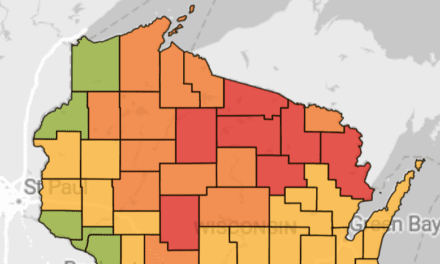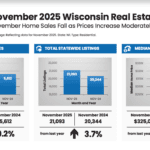BY MARK LISHERON For the Badger Institute.
Fiscal memo details how much of a hit taxpayers in other parts of Wisconsin will take
Passage of the controversial $252 million Milwaukee Public Schools referendum means hundreds of other districts statewide will get less aid.
Madison, Waukesha and Racine school districts could lose $2 million or more in one year, Appleton and West Bend between $1 million and $2 million, and New Berlin, Fond du Lac, Green Bay and Mukwonago at least $760,000, according to calculations made by the Legislative Fiscal Bureau.
Thee impact is huge,” state Sen. Van Wanggaard, R-Racine, who asked the LFB for the estimates, said. “This was a wakeup call for me on the impact of these big referendums on state aid. Huge.”
The April 2 MPS referendum passed by a narrow margin and, many critics believe, would have failed if the extent of the district’s financial mismanagement had been known beforehand.
“This is deeply concerning, as this news may have changed the results of the referendum,” state Rep. Scott Allen, R-Waukesha, said. “In the private sector, such activity is regarded as fraud and would be legal grounds for voiding a contract.”
It’s now becoming clear, in addition, that reverberations will be felt statewide.
“It has become a State of Wisconsin problem to fix Milwaukee schools,” Allen told the Badger Institute. “This is no longer a ‘local issue.’ The scandal we see at the top of the administration of MPS is merely the tip of the iceberg of financial mismanagement, not to mention academic mismanagement.”
In the weeks leading up to the election, Wanggaard said discussions with other lawmakers prompted him to ask the Legislative Fiscal Bureau to calculate the impact of the district that is by far the largest in the state getting that kind of financial windfall based on the tiered equalization aid formula in place since 1995.
In theory, the formula ought to equalize the tax base statewide, according to the LFB report. “In pure form, this means that a school district’s property tax rate does not depend on the property tax base of the district, but rather on the level of expenditures,” according to the report. “Districts with low per pupil property valuations receive a larger share of their costs through the formula than districts with high per pupil property valuations.”
It is a formula, however, that the Legislature has sidestepped for more than a decade as the financial straits narrowed for the Milwaukee Public Schools, Dale Kooyenga, who served in the Assembly and Senate during that period, told the Badger Institute.
Kooyenga, now president of the Metropolitan Milwaukee Association of Commerce, said the Legislature got around the formula by adding funding to “per-pupil categorical aid.”
“This aid simply gave school districts more money per child regardless of property tax base or other factors,” Kooyenga said.
The exact extent of the loss of aid in coming years cannot be calculated exactly, but the Legislative Fiscal Bureau has come up with close approximations based on finances in a prior year.
The Legislative Fiscal Bureau did its calculating based on the $5.34 billion of state aid appropriated in the 2022-23 school year. Had MPS added $140 million in revenue in that year (as the district has said it plans to do in the 2024-25 school year while gradually phasing in the full $252 million approved by voters) MPS would have received $48.8 million more in state aid the school year following the referendum year, according to the report.
In the LFB’s calculations, Milwaukee’s aid increase sets off a redistribution of $87.9 million, leaving 357 of the state’s 421 districts with less aid than they normally would have gotten, the report said.
It would then be up to people in those districts to make up for those losses through property tax increases.
“Racine Unified is aware of the potential loss of revenue,” Jeffrey Serak, chief financial officer for the district, told the Badger Institute. “Any loss of revenue digs our deficit a little deeper, resulting in more cost reductions across the district.”
And while its total state aid is much less than the bigger districts, the School District of Tomahawk stands to lose the largest percentage of aid because of the referendum, a drop from $1.8 million to $1.5 million, or 17.4%, according to the report.
Bill Andrekopoulos, a retired MPS superintendent who was an outspoken opponent of the referendum, said it was “beyond startling” to realize not only what a big impact it would have on education in the state, but that such important information is only now getting to the taxpaying and voting public.
“Guess what: All of these districts, whether small or large, are going to have to ask their local taxpayers for more in property taxes,” Andrekopoulos told the Badger Institute. “The more stuff like this gets out, the more people are going to see the need to make a change.”
The change might have to come from Madison to stabilize what Kooyenga called the “constant water balloon motion of property tax shifts” in response to all the impacts on the state aid formula. Despite its intentions, the state system “is not equal funding,” he said.
Wanggaard said he called on the LFB initially because of statewide concerns. “I wasn’t focusing on the referendum. It’s not my district. I’m not a Milwaukee taxpayer,” he said.
When he got the results of the report and the daily disclosures from Madison and Milwaukee, Wanggaard said he was spurred to keep the reform of MPS and the school aid formula alive until the next session of the Legislature, which begins in January 2025.
“This is our ‘Holy crap!’ moment. We’re at the starting line, just at the beginning,” Wanggaard said. “I can tell you we’re going to get to the bottom of it. We’re not going to let it go.”
Mark Lisheron is the Managing Editor of the Badger Institute. Reprinted with permission.
















